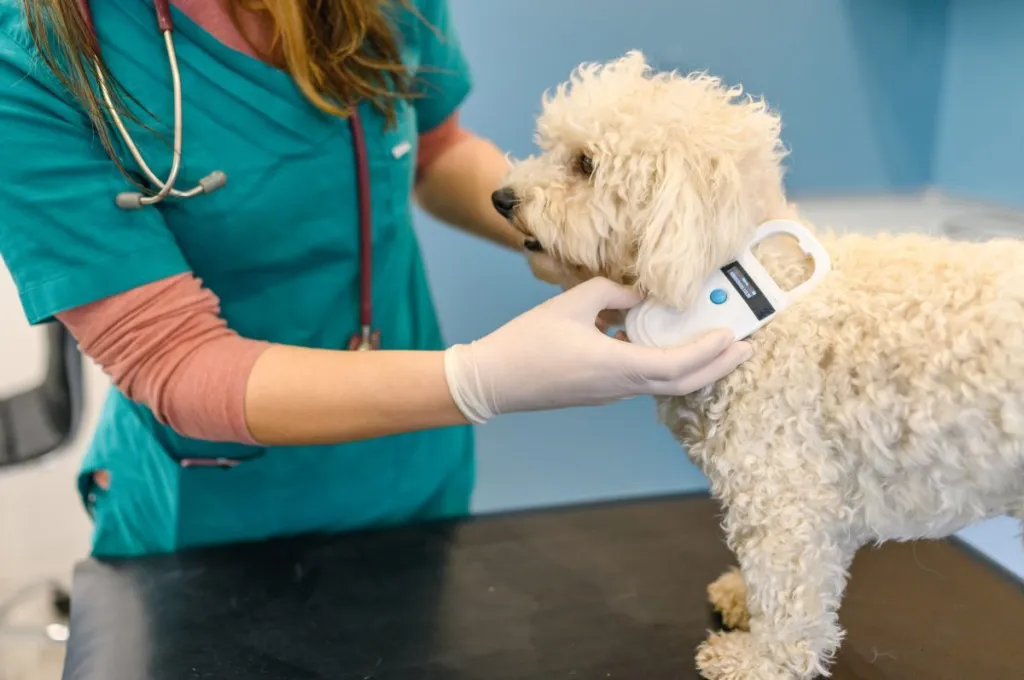Despite our best intentions, dogs get out when we’re sure they can’t. They run through open doors, dig under fences, hop out car windows, and squeeze through tiny little cat doors that you’d swear couldn’t accommodate a squirrel, much less your bouncy dog. In combination with an ID tag, a microchip is your safest bet for getting your lost dog returned to you safely. These tiny chips are embedded between your dog’s shoulder and, when scanned, can be used to identify your dog and reunite them with their parent. Here’s everything you need to know about microchips for dogs.
How microchips for dogs work
A microchip is about the size of a raw grain of rice and is made of biocompatible material. Using a large syringe, a veterinarian implants it into the skin beneath your dog’s shoulder blades. (Local shelters will often offer microchips for dogs as well, sometimes at a reduced cost.) This placement is permanent. The implantation procedure doesn’t hurt any more than any other injection, and there’s no need for local anesthetic.
Your vet will use a scanner to check that the microchip is working properly. The scanner uses a radio wave set at a certain frequency to turn the microchip on, then sends a signal to the implanted chip. In response, the chip’s number is sent to the scanner. Your contact information is matched to the microchip’s number and sent to a registry. Each microchip has a unique number.
Pros of microchips for dogs
- Shelters, animal control personnel, and veterinarians use them to try to identify stray dogs. The registry will show the parent’s contact information. These registries are usually open 24 hours a day, seven days a week.
- Some companies provide a more comprehensive service, such as preauthorizing a financial limit in case your dog is found injured.
- Microchips will last 25 years.
Cons of microchips for dogs
Unfortunately, in the U.S., the system doesn’t quite work smoothly.
- There are two different types of microchips on the market. The first microchip that became popular has been in use here since the 1990s. The other (called ISO) has long been used in Europe and was introduced in the U.S. for companion animals in 2003, although it had already been used here for large animals for some time.
- Both types of chips use different radio frequencies, with the result that no scanner is compatible with all the microchips out there, even though some claim to be universal. If a shelter has a scanner that can’t read your dog’s microchip, the chip is useless in that situation. Some shelters and clinics have multiple scanners, but most can’t afford more than one (they cost several hundred dollars, and shelters are always short of funds). Although some manufacturers state that they have universal scanners, those haven’t worked out as well as hoped.
- There’s more than one registry. This is less helpful than having one big national database.
How to get the most out of a microchip
- Ask your local shelter what brand of microchip they use. Then, ask your veterinarian to use that brand.
- If you move, update the microchip registry with your new contact information. Otherwise, the microchip will be useless if your dog gets lost. (Dogs can easily panic and disappear during the frenzy of moving.) Also, make sure you update them if you get rid of your landline or change your number for whatever
- If you’ve moved to a new area and your new shelter uses a different scanner, call the microchip manufacturer and ask if they will donate one to your shelter.









